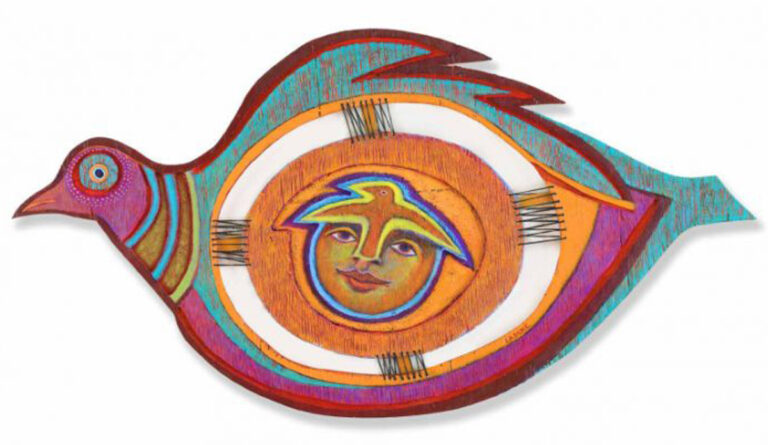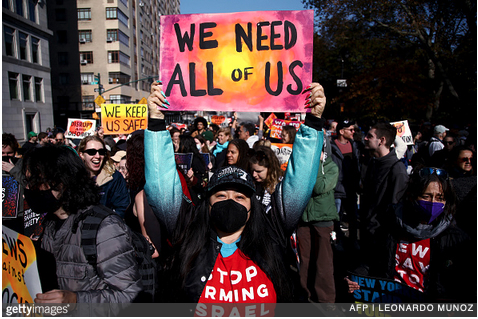The trolling began. Wong had once described herself, in a first-person story, as half-Chinese American and half-Jewish, so her online attackers blasted vicious slurs against both parts of her heritage. They circulated photos doctored to show horns on her head. They talked about where she lived.
It has only gotten worse since then. In 2019, Wong wrote a story about the man accused of killing 23 people at an El Paso Walmart after allegedly penning a missive posted to 8chan, an anonymous discussion board. Swarms of toxic online denizens of that site and others came after her, bombarding her with death and rape threats.
“I got really scared,” Wong told me by phone last week. “It kind of overwhelms you. It puts you into a fight-or-flight state.”
And there was another worry, she said: “I became a liability to my family members,” whom the trolls also began to target. She had reason to fear that her siblings’ jobs could be endangered by trolls making bogus complaints about them.
She suffered panic attacks so severe that she had to take time off work. The Guardian, she told me, has been supportive, helping with digital security and judging that her mental health trauma could be seen as a workplace injury.
And yet, she feels shame. “I am so embarrassed not to be able to do my job.”
Wong’s situation is a kind that is increasingly common for journalists — especially women who cover technology.
Take the case of Taylor Lorenz, a reporter in her mid-30s who joined the New York Times about a year and a half ago. She has drawn a lot of attention for covering some of the bigger players and cultural trends in the male-dominated tech world, and she herself is active and outspoken on social media.
Last week, she tweeted about “the harassment and smear campaign I’ve had to endure” in a message urging her followers to “consider supporting women” dealing with such attacks. A harmless enough tweet, one might think. Not for Fox News’s Tucker Carlson. The most-watched host in cable news proceeded to lavish significant airtime over two nights bashing the journalist for this sentiment, calling her “a deeply unhappy narcissist” and an example of “the most privileged in our society pretending to be oppressed.”
It’s not what Carlson says about her that’s so bad. It’s that his disproportionate focus on her before his audience of millions has unleashed ever more troll attacks. Lorenz called that “an attempt to mobilize an army of followers to memorize my name and instigate harassment.” And, she wrote, “the scope of attacks has been unimaginable. There’s no escape.”
The digital harassment is pervasive, and it is destructive to the lives and careers of female journalists. Much of it dates back to GamerGate, the Internet culture war that began in 2013, in which armies of misogynistic Internet trolls were sicced on female gamers and journalists. The Washington Post’s Caitlin Dewey called it “a proxy war for a greater cultural battle over space and visibility and inclusion, a battle over who belongs to the mainstream.”
Misogyny, often racist misogyny, is at the heart of the more recent attacks on journalists, too. And it’s happening all over the world.
The Post’s Seung Min Kim was targeted by trolls online after doing routine reporting on Capitol Hill last month. The abuse prompted Post National Editor Steven Ginsberg to respond in a statement: “The racist and sexist attacks have been vicious — and typical. She and other minority women endure vile, baseless attacks on a daily basis, no matter what story they are working on or tweeting about.”
Elisa Lees Muñoz, executive director of the International Women’s Media Foundation, told me last week that the purpose is “clearly an effort to silence women’s voices in public spaces.”
Sadly, there is a chilling effect on journalism itself. Reporters may decide to pull back to protect themselves, asking whether a particular article is really worth the abuse it will bring. They may decide to leave the profession altogether.
The foundation put out a statement in support of Lorenz: “Women journalists must be able to do their jobs without fear for their lives — we stand with Lorenz and call for an immediate end to this violent behavior.”
With a coalition of other organizations, including the Committee to Protect Journalists and the International Center for Journalists, the foundation will launch a digital security “hub” to provide support and resources. It will be a place to turn to when the Internet gets especially ugly.
Despite her harrowing experience, Wong knows she has been more fortunate than many others, because her employer has been supportive and because she is on staff. For freelancers, or journalists on short-term contracts, she noted, that protection often doesn’t exist.
Some conflict-averse news companies deal with the problem by simply refusing to employ women who are being targeted online, Wong said. “They get thrown under the bus.”
The answers aren’t obvious. Social media platforms such as Facebook and Twitter are unlikely to solve the problem. And someone such as Carlson, whose entire persona is based on engendering outrage, may just move on to the next target.
If there’s anything hopeful, it’s the increasing awareness. And that organizations are getting together to help.
“Attention is clearly a weapon — or can be,” Wong told me. “When there’s a threat, it feels like a physical threat.”
I know what she means. I’ve experienced just enough of this abuse — viciously misogynistic name-calling and sexualized fantasies about dismembering me — to understand it a little. Most of mine came when I criticized former president Donald Trump or his media allies, but the subject matter isn’t really at the core.
It’s simply an unhinged rage that women dare to have a voice.
Unless you’ve been there, it’s hard to comprehend how deeply destabilizing it is, how it can make you think twice about your next story, or even whether being a journalist remains worth it.
And yet, my experience is only a tiny fraction of Wong’s or so many others’.
Even if the hordes never make it to your door, the fear is real.


